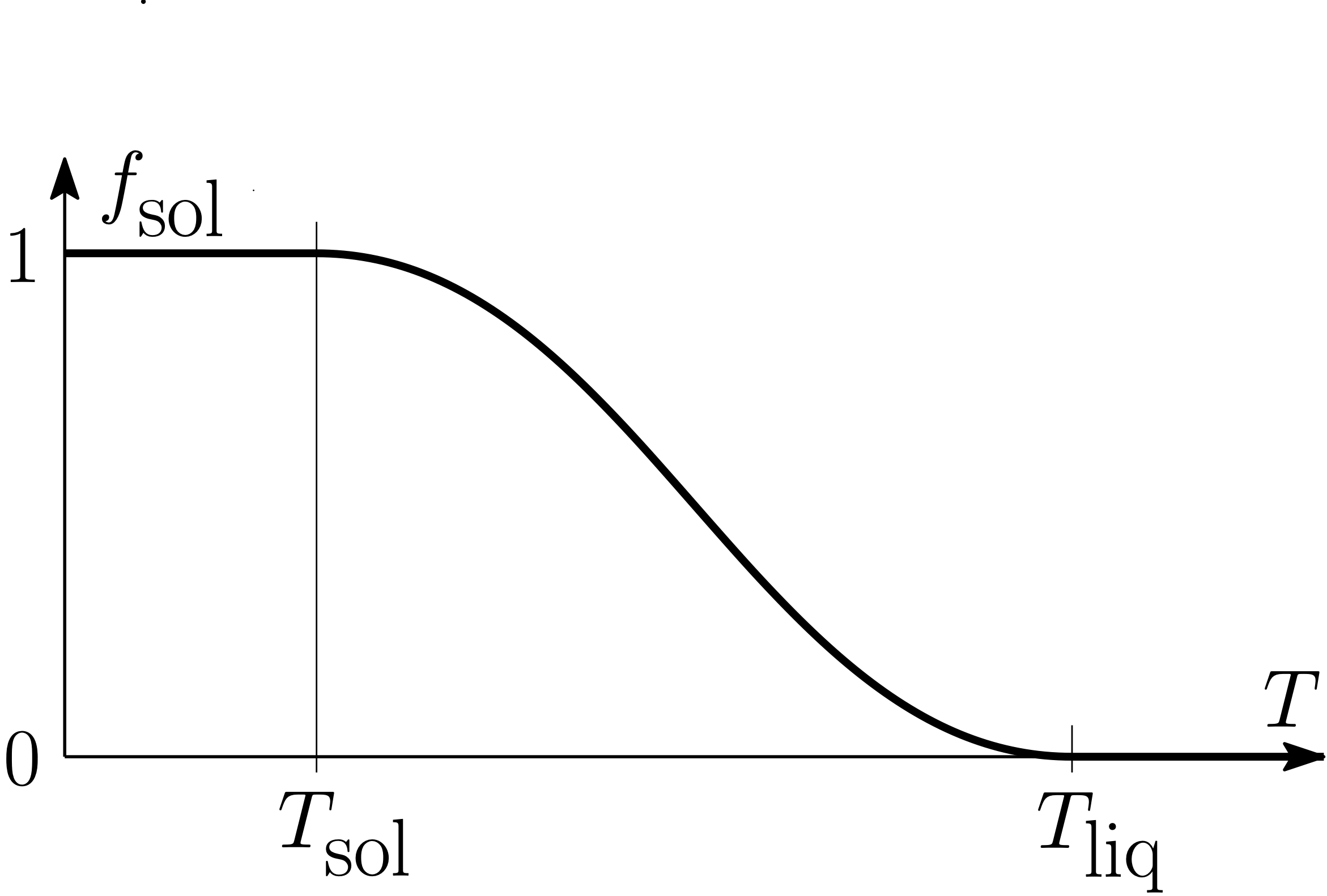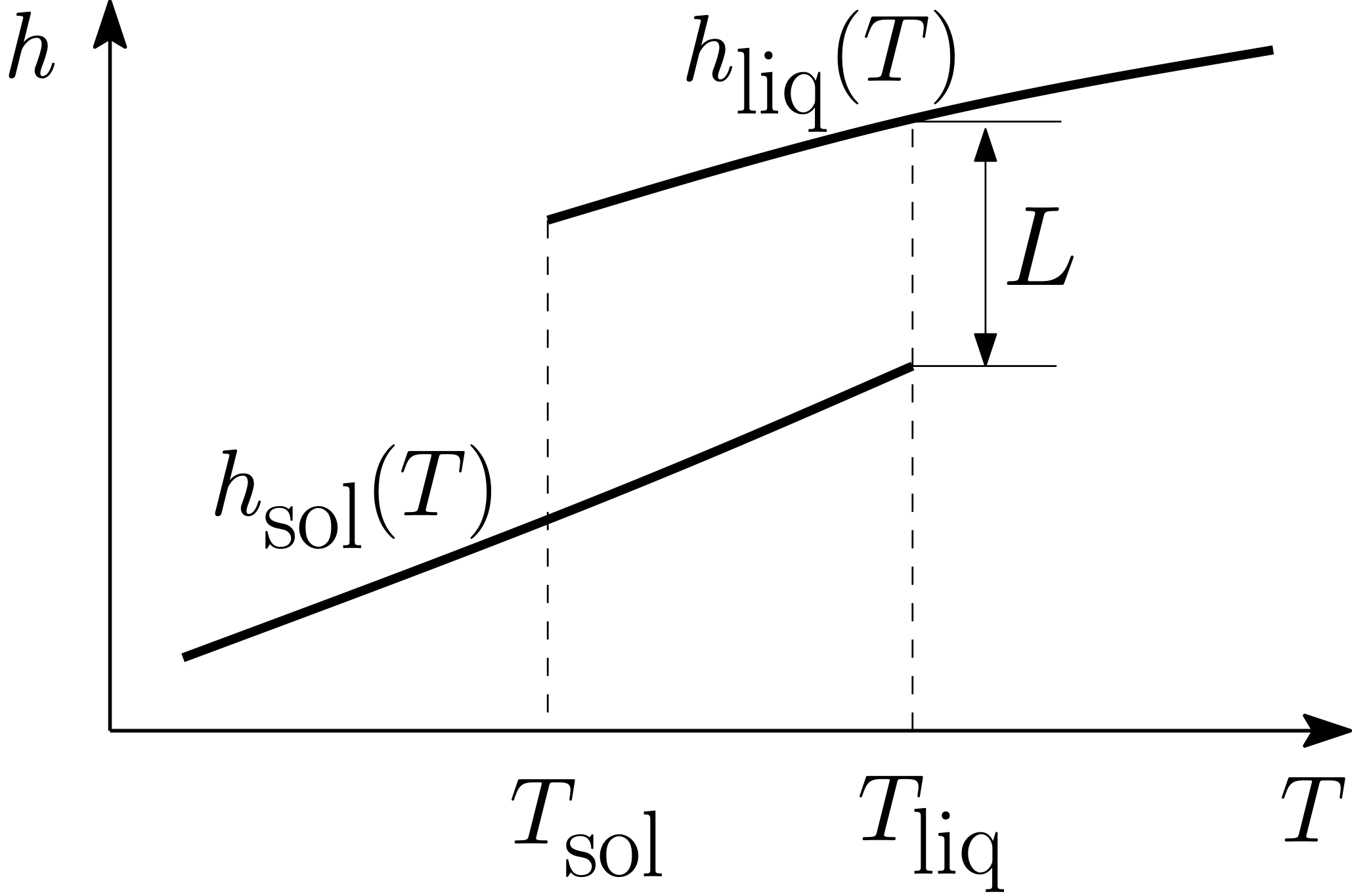23. PHASE_CHANGE Namelist
23.1. Overview
The PHASE_CHANGE namelist defines the phase change model used for the transformation between two phases of a multi-phase material. An instance of this namelist is required for each consecutive pair of phases specified by the phases variable of a MATERIAL namelist.
Truchas models the transformation from low temperature phase (“solid”) to high temperature phase (“liquid”) using a “solid fraction” function \(f_{\text{sol}}(T)\) that gives the fraction of low temperature phase as a function of temperature. There are two temperatures \(T_{\text{sol}} \lt T_{\text{liq}}\) such that \(f_{\text{sol}} = 1\) for \(T \leq T_{\text{sol}},f_{\text{sol}} = 0\) for \(T \geq T_{\text{liq}}\), and \(0 \lt f_{\text{sol}} \lt 1\) for \(T_{\text{sol}} \lt T \lt T_{\text{liq}}\). There are two alternative methods for specifying this function.
The first simple, but non-physical, method uses a smooth Hermite cubic polynomial to interpolate \(f_{\text{sol}}\) between \(T_{\text{sol}}\) and \(T_{\text{liq}}\). This is pictured below. The second method uses a table of \((T,f_{\text{sol}})\) values to define \(f_{\text{sol}}(T)\). This allows physics-based phase change models like lever and Scheil to be defined, and data from CALPHAD-type tools to be used directly.
Note that while described in terms of solid and liquid, these phase change models also apply to solid-solid transformations with the obvious reinterpretation of notation.
23.2. Namelist Variables
- low_temp_phase, high_temp_phase
These are the names of the two material phases.
- solidus_temp, liquidus_temp
The solidus and liquidus temperatures, \(T_{\text{sol}}\) and \(T_{\text{liq}}\). If these variables are defined, the simple solid fraction model is used, which interpolates the solid fraction over the interval \([T_{\text{sol}}, T_{\text{liq}}]\) using a smooth Hermite cubic polynomial. These variables are incompatible with solid_frac_table.

Figure 23.2.1 Phase Change Schematic
- solid_frac_table
A table of temperature-solid fraction values. The format is the same as described for the FUNCTION namelist Tabular_Data variable. However the table may be given in either increasing or decreasing temperature order, and the solid fraction values must be strictly monotone. The table endpoints must specify the 1 and 0 solid fractions, and the corresponding temperatures are taken to be \(T_{\text{sol}}\) and \(T_{\text{liq}}\), respectively. The solid fraction function is interpolated from this table using Akima smoothing; see the FUNCTION namelist Tabular_Interp. Additional data points outside the interval \([T_{\text{sol}}, T_{\text{liq}}]\) are automatically added to ensure that the solid fraction is constant outside the transformation interval. A plotfile of the resulting smoothed solid fraction function is written to the output directory. This is a standard 2-column text file of \((T,f_{\text{sol}}(T))\) values over the transition interval, which can be imported into your favorite plotting tool. This variable is incompatible with solidus_temp and liquidus_temp.
solid_frac_table = 930.0 1.00 931.0 0.95 ... 940.0 0.00
- latent_heat
The energy per unit mass \(L\) absorbed during the transformation of the material from the low temperature phase to the high temperature phase at the liquidus temperature \(T_{\text{liq}}\). This property is required when the specific enthalpy of the high temperature phase is defined from its specific heat. Otherwise it is ignored.

Figure 23.2.2 Latent Heat Schematic